Review: 2013 Volkswagen Jetta Hybrid (Video)

If I say “hybrid,” most people think: slow, efficient, awful-to-drive, Prius, tree-hugger, Democrat and California. Pretty much in that order. The people’s car company however is on a mission to change your word association. In 2011 VW crafted the ridiculously fast supercharged Touareg Hybrid. For 2013, the Germans have some new words for you to associate with “hybrid”: direct-injection, turbocharged, 7-speed, DSG and Jetta. Is this enough to sway Prius shoppers looking for a more engaging ride? More importantly: should you get the Jetta Hybrid or the Jetta TDI? VW tossed us the keys to a dark blue fuel-sipper to find out.
Exterior
No longer just a “Golf sedan,” the sixth-generation Jetta shares no sheetmetal with its hatchback cousin. VW has long been known for restrained styling and the Jetta doesn’t depart from their formula of simple lines and slab sides. Still, it has a more elegant look to my eye than the Civic or the Prius. For hybrid duty VW gave the Jetta requisite aerodynamic tweaks, some hybrid badges and aerodynamic wheels. Contrary to the rumor mill, the American Jetta is the same basic car as the European Jetta (unlike the Passat) with tweaks inside and out for the different markets.
Interior
The biggest difference between the Euro and American Jetta is the interior. While both vehicles share a common design, the American version swaps squishy dash bits for hard plastic to keep the price competitive. That’s fine in a $17,000 compact car, but for a $24,995-$31,180 hybrid, harsh plastics would have been decidedly low rent. Thankfully VW had Euro Jetta parts hanging around and the MSRP of the Hybrid justified their installation (the GLI gets the up-market parts as well). The swap makes the Hybrid cabin a nicer place to spend your time than the diesel model, although the hard plastic center console and door panels remain. Fear not, it’s still a classier cabin than the Civic Hybrid or the Prius and VW had the sense to keep the gauges where they belong instead of some odd binnacle in the center of the dash. Instead of the two-dial cluster found in the standard models, the Hybrid model uses a unique four-dial unit with a “power gauge” instead of a tachometer. The power gauge displays the percentage of total system power being used from 0-100% as well as regenerative braking status.
VW offers the compact hybrid in four different trim levels, base, SE, SEL and SEL Premium. Regardless of trim, the seats are covered in VW’s “V-Tex” leatherette material. Seat cushions have not been upgraded vs the non-hybrid models so the padding is fairly firm with minimal bolstering and manual lumbar support for the driver only. If you’re one of those VW fans that misses the premium-feeling interiors they used to offer in America, stepping up to the Hybrid or GLI brings the Euro-mojo back. The TDI? Not so much. Then again the Hybrid is $2,000 more than a comparable TDI, so you’d expect better digs.
Out back, the rear seats are as low to the floor as the Civic or Corolla but are a more comfortable with improved padding. Rear passengers with longer legs will appreciate the Jetta’s 38-inches of rear legroom (2 more than Civic Hybrid, Prius or Corolla). Despite having similar headroom numbers as the Corolla and Civic, my hair brushed the ceiling in the back leaving me to question VW’s measuring devices. If you have a short torso and long legs, the Jetta is the place to be, otherwise check out something taller like a C-MAX.
VW positioned the batteries in the trunk to preserve the Jetta’s trunk pass-through. If that sounds like a no-brainer design wise, go check out the Toyota Camry Hybrid which retains the folding rear seats, but when folded they reveal a small and strangely positioned pass-through. The larger portal is possible because VW’s 60-cell, 1.1-kWh battery pack uses dense lithium-ion chemistry as opposed to nickel metal-hydride packs common on Toyota’s hybrids. VW also chose to keep the compact spare instead of either converting to a battery compartment or ditching it for a can of fix-a-flat to save weight. Keeping the spare tire and adding the battery means the cargo capacity drops nearly 30% to 11.3 cubic feet vs the regular Jetta.
Infotainment
Base hybrid models start with an AM/FM/CD player with Bluetooth audio streaming and the requisite aux input. SE and SEL models upgrade the base head unit to VW’s touchscreen display audio unit with XM-Radio and VW’s USB/iDevice interface (MDI). VW’s proprietary MDI cables plug into a port in the glove box. VW includes an MDI to iDevice cable while an MDI to USB cable is available at your dealer. In case you’re wondering, you can use an apple adapter to connect your iPhone 5 and it worked properly.
The SEL Premium model gets VW’s 5-inch touchscreen navigation unit (RNS-315) seen in a number of other VW vehicles from the Golf to the Passat. VW stores the database on 4GB of built-in flash memory which speeds up address entry and rerouting. Unfortunately VW’s infotainment offerings are getting a long in the tooth compared to the latest offerings from Toyota, Ford, Hyundai, Kia, Dodge and Chevrolet in terms of graphics quality and functionality. While Honda has yet to send HondaLink down to the Civic, everyone else is doubling down on voice recognition to search for tunes on your USB/iDevice. On the flip side, the SEL Premium gets the 9-speaker Fender audio system which is possibly the best speaker system available in a compact car.
Drivetrain
Apparently I’m not the first person to say: “gee, a small direct-injection turbo engine would be the perfect engine to jam under a hybrid’s hood.” Rather than altering the Jetta’s base 2.0L engine to run on an Atkinson cycle and adding a motor (like everyone else), VW reached into their Euro engine bin and selected their 1.4L TSI engine. The boosted, direct-injection mill is good for 150HP at 5,000RPM and 184lb-ft from 1,400 to 3,500 RPM all on its own. The engine is then mated (via a clutch pack) to a 20kW (27HP) and 114lb-ft water-cooled motor. Because gasoline engines and electric motors have different power delivery characteristics, you don’t just add the numbers to get the system total. The combined output rings in at 170HP while the torque remains 184ft-lbs but broadens to a range of 1,000 to 4,500 RPM. While that sounds tasty enough, torque below 1,000RPM improves considerably thanks to the motor cranking out 114lb-ft from essentially zero RPM.
Instead of mating the powerplant to a traditional automatic transmission like VW did with the Touareg Hybrid, the engineers pulled the new 7-speed “DSG” dual-clutch transaxle out of the bin. If you’re interested in exactly how the power flows, this might help: Engine > clutch > motor > clutch > transaxle > wheels. An important fact that isn’t immediately obvious but should be kept in mind is the 1.4L engine’s appetite for premium gasoline. While all vehicles sold in the US must run safely on regular, you will notice a drop in power when doing so.
About that fuel economy
Hybrids are all about fuel efficiency, right? Well, not if you’re GM or Porsche (or a Touareg), but I digress. This hybrid is about efficiency with a Germanic twist. Rated for 42MPG city, 48MPG highway and 45MPG combined, the Jetta falls short of the Prius’ 51/48/50 MPG or the C-MAX’s 47/47/47 rating but it is higher than the Civic Hybrid at 44/44/44 or the Jetta TDI’s 30/42/34 score. VW claims they could have matched the Prius numbers but they chose not to, instead favoring handling and performance over economy at all costs. And I could have beat Obama in the last national election but I chose not to run so I could devote my time to TTAC.
During a 743-mile week of mixed driving I averaged 37.6MPG. On the same driving cycle I averaged 41.5MPG in the C-MAX, 49.6MPG in the Prius, 42.8 in the Civic Hybrid and 36MPG in the Jetta TDI. When driven gently, our tester scored 46.6MPG on a 40 mile highway trip and 43.2MPG running around town. While these numbers fall short of the Jetta’s EPA numbers it is important to keep in mind that a 10% difference between EPA numbers and real world numbers are more pronounced when the numbers get bigger. Is this a problem? Not in my book. In reality the difference between operating a Prius and the Jetta is fairly small.
Our tester was an SEL Premium which came standard with 205/50R17 tires, an upgrade from the base model’s 205/50R15s. If you do the math, the 17-inch tires provide approximately a 10% larger contact patch on the road which improves handling but logically must take a toll on fuel economy. We were unable to get our hands on a base Jetta Hybrid to verify this and VW didn’t respond to my questions with straight answers. Tire choices are an important part of the high-efficiency package, something to keep in mind when you buy new tires for any car.
Drive
VW’s 7-speed DSG proved an interesting companion out on the road. The feeling behind the wheel is very different from other hybrid vehicles which, up till now, have predominantly used CVT-type transmissions. Like other vehicles with dual-clutch units, shifts are more noticeable than a regular automatic with a definite moment where “nothing is happening” as the DSG shifts from one gear to another. The effect seems less pronounced in the hybrid than in other VW models and the smoothness penalty is worth the improved efficiency to me. On the down side, as regenerative breaking uses the traction motor (which is located on the input side of the transaxle) braking and downshifting at the same time causes some strange brake feel as the regenerative braking “turns off” during the shift, then comes “back on” after the shift is complete. In general, the transitions between regenerative and friction braking just aren’t as polished as they are in the Ford, Toyota, Lexus or Infiniti hybrids but they are a bit better than the Civic.
The Jetta Hybrid is the most dynamic hybrid under $40,000 I have ever tested, barely besting the Civic. Although the C-MAX is a competent handler, its 3,650lb curb weight makes it feel less responsive than the 3,300lb Jetta. If you want something even more nimble, that Civic hybrid is a bantamweight 2,868lbs. Helping the Jetta around the corners is a coil spring suspension, similar to the one used in the GLI, which replaces the cheaper torsion beam setup used in the lesser Jettas. Thanks to the suspension change (and the extra curb weight from the batteries), the Hybrid model also delivers a more composed ride on broken pavement. Curb weight isn’t everything when it comes to driving however. While the Civic handles curves like a pro, even a full-sized van will eat its lunch in the straights and that’s where the Jetta pulls its lederhosen up and sprints. Our tester scooted to 60 in 7.12 seconds, just a hair behind the more powerful 188HP C-MAX and a full 2 seconds faster than the Civic Hybrid, Prius or the oil-burning Jetta TDI.
After a week and 743 miles with the fuel-sipping German I came to an important conclusion: this hybrid system should be jammed under the hood of every VW product in America. Aside from replacing the tachometer with a “power gauge,” this system presents few drawbacks while improving both performance and economy. It all comes at a price, the Jetta Hybrid is about $4,500 more than a comparably equipped gasoline Jetta. The hybrid model will save you $800 a year on your gas bill (15,000 miles a year) compared to the 2.0L gasoline-only model, but the pay back at $3.30/gallon gasoline will take 6 years. The TDI comparison is where we started and where we’ll finish. The $2,000 difference in MSRP for the hybrid gets you the upgraded interior, improved gauge cluster, a version of the European coil spring suspension and greatly improved city mileage. According to the EPA it would only take 3.5 years for the hybrid to start saving you money over the diesel. This begs the obvious question: VW, where is my diesel hybrid? Until VW decides to craft such a beast, the Jetta Hybrid should take the top spot on your list.
Volkswagen provided the vehicle, insurance and a tank of gasoline for this review.
Statistics as tested:
0-30: 2.7 seconds
0-60: 7.12 seconds
1/4 mile: 15.6 seconds at 88 MPH
Average economy: 37.6 MPG over 743 miles

More by Alex L. Dykes
Latest Car Reviews
Read moreLatest Product Reviews
Read moreRecent Comments
- Zipper69 "At least Lincoln finally learned to do a better job of not appearing to have raided the Ford parts bin"But they differentiate by being bland and unadventurous and lacking a clear brand image.
- Zipper69 "The worry is that vehicles could collect and share Americans' data with the Chinese government"Presumably, via your cellphone connection? Does the average Joe in the gig economy really have "data" that will change the balance of power?
- Zipper69 Honda seem to have a comprehensive range of sedans that sell well.
- Oberkanone How long do I have to stay in this job before I get a golden parachute?I'd lower the price of the V-Series models. Improve the quality of interiors across the entire line. I'd add a sedan larger then CT5. I'd require a financial review of Celestiq. If it's not a profit center it's gone. Styling updates in the vision of the XLR to existing models. 2+2 sports coupe woutd be added. Performance in the class of AMG GT and Porsche 911 at a price just under $100k. EV models would NOT be subsidized by ICE revenue.
- NJRide Let Cadillac be Cadillac, but in the context of 2024. As a new XT5 owner (the Emerald Green got me to buy an old design) I would have happy preferred a Lyriq hybrid. Some who really like the Lyriq's package but don't want an EV will buy another model. Most will go elsewhere. I love the V6 and good but easy to use infotainment. But I know my next car will probably be more electrified w more tech.I don't think anyone is confusing my car for a Blazer but i agree the XT6 is too derivative. Frankly the Enclave looks more prestigious. The Escalade still has got it, though I would love to see the ESV make a comeback. I still think GM missed the boat by not making a Colorado based mini-Blazer and Escalade. I don't get the 2 sedans. I feel a slightly larger and more distinctly Cadillac sedan would sell better. They also need to advertise beyond the Lyriq. I don't feel other luxury players are exactly hitting it out of the park right now so a strengthened Cadillac could regain share.



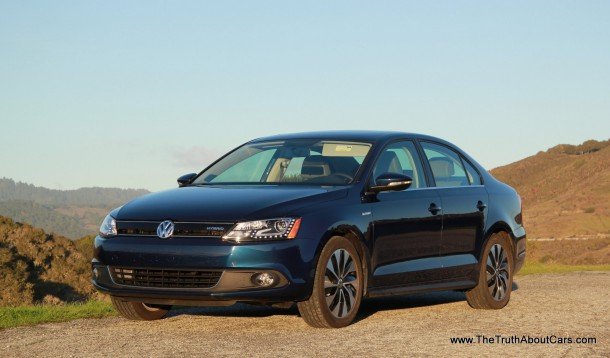



















































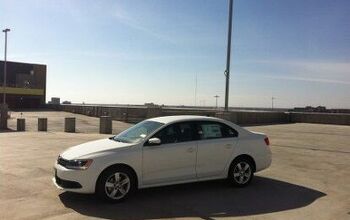
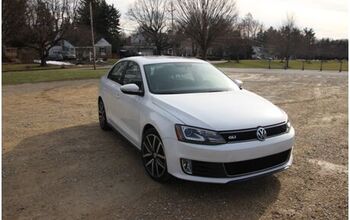
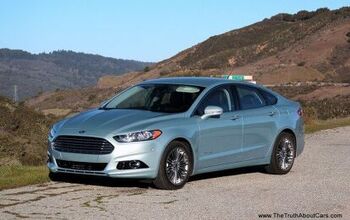

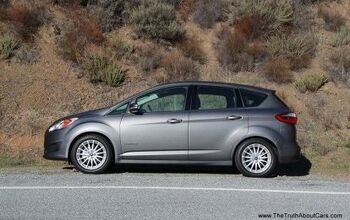










Comments
Join the conversation
Does anybody know if the engine in the Jetta Hybrid is Atkinson cycle or regular OTTO cycle? Thanks
I applaud VW for taking this approach to a hybrid, rather than creating a purpose-built car that is largely like driving a toaster on wheels, VW has taken a "real" car and added a hybrid powertrain and achieved an extremely efficient "normal" car that is still a blast to drive and is every bit as German as the rest of the lineup. As for the price, you guys do realize that a loaded Prius tops $35k...and the Jetta still has a leaps-and-bounds better transmission, a more enthusiastic power train, and is overall more entertaining to drive!! Spent two weeks behind the wheel of a Prius and could not wait to give it back. Drove a Jetta Hybrid for 40 minutes and couldn't wait to get back behind the wheel!